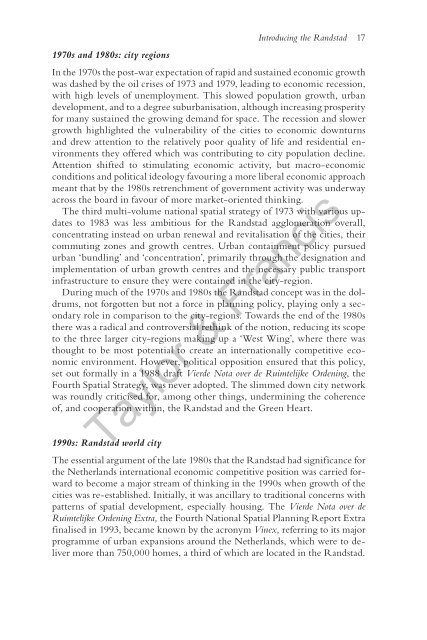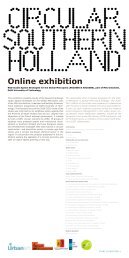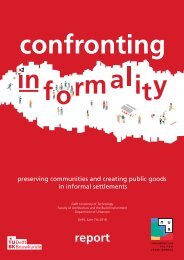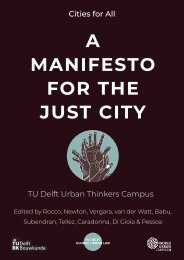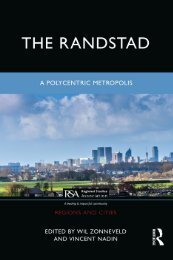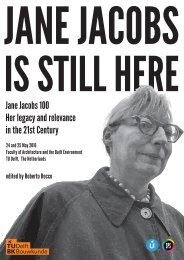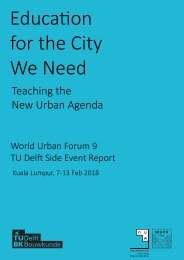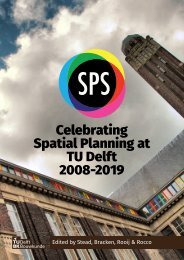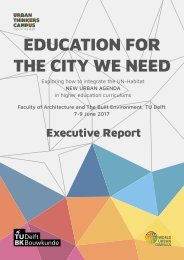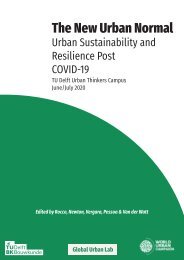The Randstad, a polycentric metropolis, by Vincent Nadin & Will Zonneveld. (Introduction Chapter)
Introduction The Randstad is a cluster of relatively medium-sized and small cities in the western Netherlands that encircles an expanse of largely open land. It is undoubtedly an important urban region, hosting in an area of about 7,000 km2, Europe’s largest seaport, third busiest airport, second largest Internet Exchange, and about 7 million people. But the Randstad is much more than this. Since the 1960s, it has acquired distinction as the archetypal polycentric metropolis, an integrated urban ring around a Green Heart, with the status of a world-class metropolitan region. There is a presumption too, that government has played an inf luential role in strengthening the polycentricity of the region, especially through its renowned capability in spatial planning. But the reality of the polycentric Randstad as opposed to the idea is controversial, as is the role of spatial planning. Do the interconnections between the four main cities – Amsterdam, The Hague, Rotterdam, and Utrecht – and the many smaller settlements in-between function as an integrated polycentric region? Does the economic and social performance of the combined whole of the Randstad add up to more than the sum of its parts? Advocates point to the apparent complementarity of the main cities with a tendency for business and financial functions to be centred in Amsterdam, port and logistics in Rotterdam, governance and international justice in The Hague, and research and development in Utrecht. Critics draw attention to the relatively limited f lows of commuters between the cities, and the concentration of the daily urban f lows within the individual city-regions, which they argue operate independently.
Introduction
The Randstad is a cluster of relatively medium-sized and small cities in the
western Netherlands that encircles an expanse of largely open land. It is undoubtedly
an important urban region, hosting in an area of about 7,000 km2,
Europe’s largest seaport, third busiest airport, second largest Internet Exchange,
and about 7 million people. But the Randstad is much more than
this. Since the 1960s, it has acquired distinction as the archetypal polycentric
metropolis, an integrated urban ring around a Green Heart, with the status of
a world-class metropolitan region. There is a presumption too, that government
has played an inf luential role in strengthening the polycentricity of the
region, especially through its renowned capability in spatial planning.
But the reality of the polycentric Randstad as opposed to the idea is controversial,
as is the role of spatial planning. Do the interconnections between the
four main cities – Amsterdam, The Hague, Rotterdam, and Utrecht – and
the many smaller settlements in-between function as an integrated polycentric
region? Does the economic and social performance of the combined
whole of the Randstad add up to more than the sum of its parts? Advocates
point to the apparent complementarity of the main cities with a tendency for
business and financial functions to be centred in Amsterdam, port and logistics
in Rotterdam, governance and international justice in The Hague, and
research and development in Utrecht. Critics draw attention to the relatively
limited f lows of commuters between the cities, and the concentration of the
daily urban f lows within the individual city-regions, which they argue operate
independently.
You also want an ePaper? Increase the reach of your titles
YUMPU automatically turns print PDFs into web optimized ePapers that Google loves.
Introducing the <strong>Randstad</strong> 17<br />
1970s and 1980s: city regions<br />
In the 1970s the post-war expectation of rapid and sustained economic growth<br />
was dashed <strong>by</strong> the oil crises of 1973 and 1979, leading to economic recession,<br />
with high levels of unemployment. This slowed population growth, urban<br />
development, and to a degree suburbanisation, although increasing prosperity<br />
for many sustained the growing demand for space. <strong>The</strong> recession and slower<br />
growth highlighted the vulnerability of the cities to economic downturns<br />
and drew attention to the relatively poor quality of life and residential environments<br />
they offered which was contributing to city population decline.<br />
Attention shifted to stimulating economic activity, but macro-economic<br />
conditions and political ideology favouring a more liberal economic approach<br />
meant that <strong>by</strong> the 1980s retrenchment of government activity was underway<br />
across the board in favour of more market-oriented thinking.<br />
<strong>The</strong> third multi-volume national spatial strategy of 1973 with various updates<br />
to 1983 was less ambitious for the <strong>Randstad</strong> agglomeration overall,<br />
concentrating instead on urban renewal and revitalisation of the cities, their<br />
commuting zones and growth centres. Urban containment policy pursued<br />
urban ‘bundling’ and ‘concentration’, primarily through the designation and<br />
implementation of urban growth centres and the necessary public transport<br />
infrastructure to ensure they were contained in the city-region.<br />
During much of the 1970s and 1980s the <strong>Randstad</strong> concept was in the doldrums,<br />
not forgotten but not a force in planning policy, playing only a secondary<br />
role in comparison to the city-regions. Towards the end of the 1980s<br />
there was a radical and controversial rethink of the notion, reducing its scope<br />
to the three larger city-regions making up a ‘West Wing’, where there was<br />
thought to be most potential to create an internationally competitive economic<br />
environment. However, political opposition ensured that this policy,<br />
set out formally in a 1988 draft Vierde Nota over de Ruimtelijke Ordening, the<br />
Fourth Spatial Strategy, was never adopted. <strong>The</strong> slimmed down city network<br />
was roundly criticised for, among other things, undermining the coherence<br />
of, and cooperation within, the <strong>Randstad</strong> and the Green Heart.<br />
Taylor & Francis<br />
1990s: <strong>Randstad</strong> world city<br />
<strong>The</strong> essential argument of the late 1980s that the <strong>Randstad</strong> had significance for<br />
the Netherlands international economic competitive position was carried forward<br />
to become a major stream of thinking in the 1990s when growth of the<br />
cities was re-established. Initially, it was ancillary to traditional concerns with<br />
patterns of spatial development, especially housing. <strong>The</strong> Vierde Nota over de<br />
Ruimtelijke Ordening Extra, the Fourth National Spatial Planning Report Extra<br />
finalised in 1993, became known <strong>by</strong> the acronym Vinex, referring to its major<br />
programme of urban expansions around the Netherlands, which were to deliver<br />
more than 750,000 homes, a third of which are located in the <strong>Randstad</strong>.


